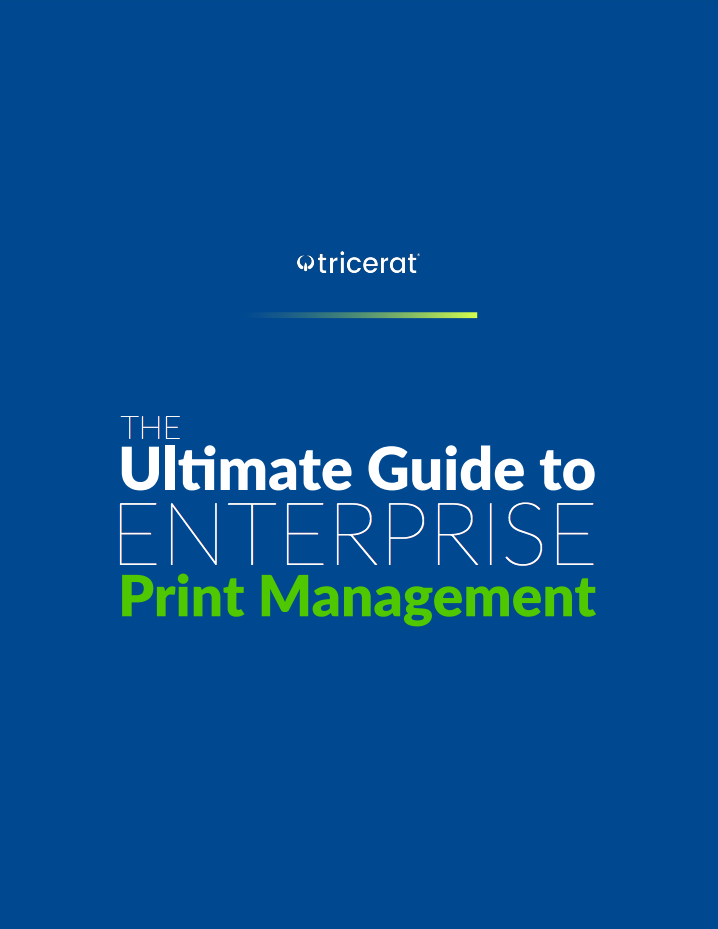Every healthcare IT leader knows the scenario: during morning rounds, a physician finds yesterday's pathology report sitting in the printer tray. The report contains a patient's cancer diagnosis, genetic markers, and insurance information. Who else saw it? Was it photographed? The answers are unknowable, but the HIPAA violation is certain. With penalties reaching $50,000 to $1.9 million per incident and criminal charges possible for willful neglect, that forgotten printout represents an existential threat to both the organization and individual careers.

Despite healthcare's digital transformation, paper remains stubbornly prevalent. Recent studies show hospitals generate an average of 1,000 pages per bed annually—lab results, consent forms, discharge instructions, prescription information, and administrative documents. Each page potentially contains PHI that, if mishandled, triggers breach notification requirements.
The numbers tell a troubling story. HIPAA Journal's March 2025 breach report lists 53 incidents affecting 500+ individuals, with physical PHI exposure accounting for 22% of cases. While electronic breaches grab headlines, paper-based violations often prove more damaging because they're harder to detect, impossible to remotely remediate, and frequently involve trusted insiders.
HIPAA's Security Rule mandates "reasonable and appropriate" safeguards for PHI, but many organizations misinterpret this as applying only to electronic systems. The reality is more complex:
Physical Safeguards (45 CFR 164.310)
Technical Safeguards (45 CFR 164.312)
Administrative Safeguards (45 CFR 164.308)
Failure in any category can trigger enforcement actions. Recent OCR settlements show increasing focus on print-related violations, with penalties climbing sharply.
Traditional printing—where documents immediately output at a designated device—creates inherent vulnerabilities. Hold and release printing, also called pull printing or secure release, revolutionizes this model. Users send print jobs to a virtual queue rather than a specific device. Documents remain encrypted and stored centrally until the user authenticates at any enabled printer and actively releases them.
This shift from "push" to "pull" printing transforms security dynamics:
ScrewDrivers brings enterprise-grade hold and release printing to healthcare's unique environment needs. ScrewDrivers addresses clinical workflows while meeting HIPAA's technical requirements:
Clinical Workflow Optimization
Healthcare printing differs from corporate environments. Clinicians need speed, reliability, and minimal disruption. ScrewDrivers delivers:
Layers Onto Any EHR Platform
ScrewDrivers layers seamlessly with Epic, Cerner, Meditech, and other platforms which maintains:
Multi-Factor Authentication Options
A leading not-for-profit healthcare organization in the Pacific Northwest demonstrates the transformative power of on-premises secure print management. Facing critical challenges during a Citrix rollout, they partnered with Tricerat to implement ScrewDrivers v7.
The Challenge Matrix
The health system's existing cloud-based print solution created multiple failure points
Strategic Solution Implementation
Centralized Print Management
ScrewDrivers v7 consolidated all print servers and queues into a single control point. This eliminated the complexity of managing multiple print servers across facilities while providing IT administrators with comprehensive visibility. The centralized architecture reduced configuration errors and enabled policy changes to propagate instantly across the entire health system.
On-Premises Security Architecture
By deploying entirely within the organization's security perimeter, ScrewDrivers ensured all PHI remained under direct control. Print jobs never traverse external networks, satisfying the strictest interpretation of HIPAA requirements. The on-premises model also enabled integration with existing security tools.
Universal Virtual Driver Innovation
The universal driver approach eliminated the need for maintaining hundreds of device-specific drivers on VDI golden images. This breakthrough:
Measurable Results
With ScrewDrivers, you can expect transformative outcomes such as:
While HIPAA compliance drives adoption, hold and release printing delivers unexpected benefits:
Ready to eliminate print-related HIPAA exposure? Schedule a 15-minute demo to see ScrewDrivers hold and release in action. Our healthcare security experts will show you how leading hospitals achieve zero abandoned documents while improving clinical workflows.
